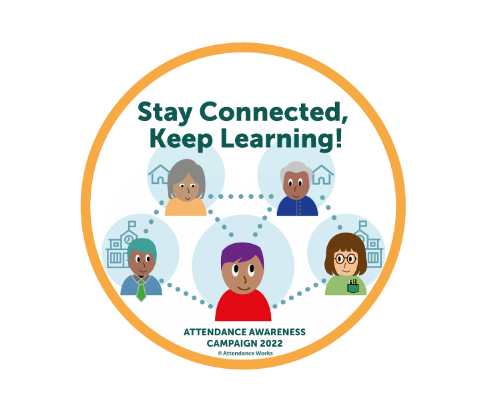Regular attendance is vital for student success. When students attend regularly, starting as early as preschool and kindergarten, they have an opportunity to achieve academically and thrive. Research shows that when students are chronically absent – missing 10% or more of the school year or 18 days over an entire year – they are less likely to read proficiently by third grade, achieve in middle school and graduate from high school.
Monitoring chronic absence and tracking whether absences are excused, unexcused or due to suspension — is key to responding strategically to the academic and social-emotional loss experienced by millions of students. Over two years into the pandemic, chronic absence has nearly tripled. Black, Latino and Native American students, students living in poverty, students with disabilities and English language learners have been especially affected.
The good news is that when we take steps to reduce chronic absence, it benefits our entire society. We all prosper when children and youth, regardless of their race, ethnicity, gender, neighborhood or income have the opportunity to gain skills and abilities that prepare them for success in school, work and life.
Below are key messages that everyone —districts, schools, preschools, health providers, public agencies, community organizations, faith-based institutions, elected officials, businesses and families—can use this year to rally their school communities to support students and families in order to improve attendance, connection and achievement.
SEND THE MESSAGE THAT SHOWING UP MATTERS!
- Reducing chronic absence can help address educational inequity.
- Every day a student is in school is an opportunity to learn, build relationships and access supports.
- Avoid blaming families for missing school, and use chronic absence to identify and constructively engage student groups and families experiencing the greatest inequities.
- Building trusting relationships that promote belonging is fundamental to improving student attendance and engagement.
- Recognize families as essential partners through reciprocal relationships that support student learning at home and in school.
- Building strong relationships is helpful for all families, but they are essential for working with children and family members who have experienced any form of trauma.
- Developing relationships takes time. Begin when you can and continue your efforts throughout the school year.
- Students are more likely to attend school if they feel safe, connected and supported.
- School staff, especially teachers, are critical to creating a school climate that motivates students to attend by fostering a belief among students that they can achieve, and encouraging families to become and stay involved.
- Community and local government partners can help promote environments in which all students are welcomed, affirmed and feel they belong in school.
- Students engage in learning when given positive, supportive conditions, with access to individualized learning and behavioral support.
- Consistent, predictable routines for learning every day, whether students are in the school building or involved in distance learning, can create a sense of safety and are essential to attendance, engagement and achievement.
- A positive, problem-solving approach driven by data will improve attendance.
- Share chronic absence data so everyone is aware of the size and scale of the attendance and engagement challenge.
- Chronic absence is easily masked by average attendance rates and truancy (unexcused absences).
- Use multiple metrics. ***Other attendance data can be found on ImpactTulsa’s data dashboard.
- Supporting students, families and school staff physically and emotionally improves attendance.
- A proactive approach to social, emotional and behavioral health helps students focus and learn.
- Follow the advice of local health agencies and districts to intensify the focus on clean environments, and reduce mold or pest infestations that trigger asthma attacks and other respiratory ailments.
- Address fears about Covid-19 among students and families to increase the likelihood that families will enroll and show up in person at the start of the school year.
- Work with health professionals to communicate with parents, caregivers and educators about when students should stay home and when to return to school after being sick.
- When the whole community collaborates with families and schools, we can overcome systemic barriers to attendance and engagement..
- Governments, public agencies and community organizations are essential partners for addressing attendance barriers such as transportation, housing and food insecurity and ensuring positive conditions for learning are in place for students of all backgrounds.
- Districts can share chronic absence data to guide investments from public agencies and community partners.
- State leaders can promote the availability of timely data, support professional development, and allocate funds and programs to reduce chronic absence and increase engagement.
- Leaders at all levels and from every sector can call for a positive, prevention-oriented approach, including participating in the national Attendance Awareness Campaign.
Used with permission from Attendance Works.
Toolkit link: https://awareness.attendanceworks.org/resources/toolkit-2022/what-are-the-key-messages/
PDF link: https://awareness.attendanceworks.org/wp-content/uploads/KeyMessages_Attendance_Works_040422.pdf

